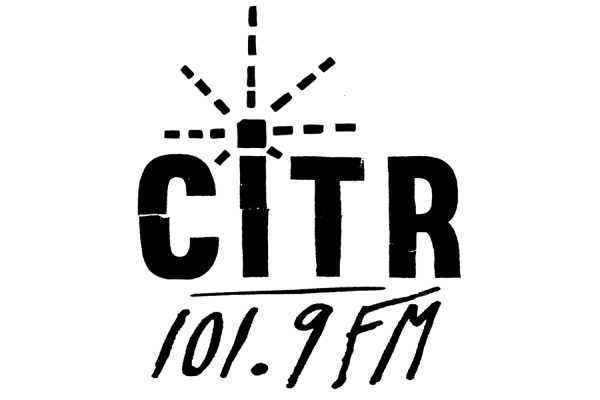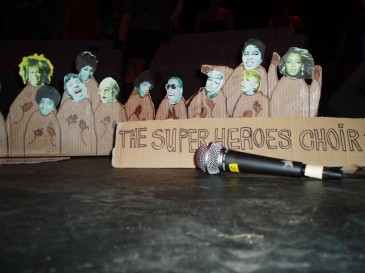Last year, the Vancouver Art Gallery hosted a major exhibition called Massive Change, an optimistic take on the progress of humanity into the 21st Century. Meditating on the life-altering potential of new technology, designer Bruce Mau organized the show around the question, “Now that we can do anything, what will we do?” Set to the tone of Telus’ reassuringly benign slogan, “The Future is Friendly,” Massive Change sought to provide a positive counterpoint to the naysayers in the globalization debate. In contrast to the concept of technology as a malevolent force capable of usurping the sovereignty of humankind and ultimately rendering the Earth uninhabitable, Bruce Mau’s exhibit argued in favour of science guided by intelligent and sustainable planning.
Massive Change, which will be showing at Chicago’s Museum of Contemporary Art in 2006, contends that “design has emerged as one of the world’s most powerful forces. It has placed us at the beginning of a new period of human possibility, where all economies and ecologies are becoming global, relational, and interconnected.” Despite comprehensive coverage of the impacts of design, from computer interfaces to cheap and effi cient water purification
methods, one simple question was conspicuously absent: What does this all mean?
While designers, scientists, and technophiles relentlessly forge ahead into a brave new world of cheaper, faster, and easier, it has traditionally been the role of the artist to wonder what these changes mean, or if they are even desirable. Despite all our best efforts in design, it is often the unintended or unforeseen consequences of innovation that have the greatest impact. Ironically, the Vancouver Art Gallery exhibition lacked this perspective, focusing on the utility of
technology rather than more critical issues, such as the redefinition of human existence through our increasing dependence on electronics; the ways in which technology distances us from the natural world.
Theoretical concerns aside, there remains the more immediate question of how new forms alter our means of creative expression. Art and technology have always had an intimate relationship, as different tools such as the paintbrush, the camera, or the mouse influence how we choose to represent the world. As Canadian media theorist Marshall McLuhan famously stated, “The medium is the message.” It’s time we listened to what emerging technologies are saying.
*
Back in 2000, amidst Y2K hype and millennial anxiety about the transition into the ‘00s, Capital Magazine co-founders Malcolm Levy and Jarrett Martineau recognized a need for a dedicated forum to discuss the impact of new forms in art and culture. The resulting project was the aptly titled New Forms Festival, an annual showcase for artists, musicians, and cultural theorists to explore the intersections of technology and art. Now in its fifth year, the festival has gained international recognition, bringing together members of the electronic community from across the globe to participate in exhibitions, performance art series, conferences, and workshops. Running from September 15 to 24 in an assortment of venues such as Video In Studios and The Western Front, New Forms promotes a uniquely multidisciplinary approach to art exhibition. The New Forms Media Society aims not only to provide a venue for contemporary
art, but also to develop a dialogue between the often isolated realms of art and science. Interactivity is a major focus, as many of the exhibits invite audience participation, and workshops seek to disseminate tools and information in order to broaden the community and increase public awareness.
This year’s festival, organized around the theme “Ecologies,” examines the ways in which technology can alter our existing environment as well as create virtual ones. Using ecological systems as a guiding principle, artists are invited to explore the possibilities of modeling advancements in art and science after the existing interrelationships in the organic world.
When pressed about how the theme was chosen for this year, Malcolm Levy explained that the idea struck him while he was pondering organic wisdom in one of Amsterdam’s lovely cafés. For those with a taste for the finer things in Vancouver life, a city with undeniable similarities to the famed liberal haven in the Netherlands, this kind of sudden inspiration is probably familiar. Hazy origins aside, the theme has particular relevance as the drive to ratify the Kyoto
Protocol continues, and pressure to find alternative energy sources intensifi es in the wake of soaring oil prices and the protracted war in Iraq. While art may seem powerless in the face of such massive political issues, it is important to remember that all actions are based on ideas, and that ideas do not simply materialize out of nothing. Events such as the New Forms Festival are the breeding grounds of new memes, which disperse out into the global culture and may ultimately impact the decisions of political elites. According to author and cultural theorist J.G. Ballard, “many of the great cultural shifts that prepare the way for political change are largely aesthetic.”
With Ballard’s pronouncement in mind, contemporary electronic culture seems to be on the verge of a shift, a change which could have far-reaching impact if some of the ideas in Ecologies are realized. Discussing the contrast between the work showcased at the New Forms Festival and traditionally accepted art forms, Malcolm Levy muses that “some of the most cutting edge works coming out of media arts are not yet seen as part of this field.” He sees the distinction between “high” and “low” art as largely arbitrary, with little more than an art form’s surrounding image to blame for membership in either group.
Although some new media arts have yet to gain entrance into the hallowed halls of officially sanctioned galleries, there is an undeniable movement in Canada to foster the development of new forms. At this year’s media launch, held on August 18th at Video Monster, Vancouver-based artists Carol Sill and James K-M unveiled their DVD project entitled, “Electric Living in Canada,” a compendium of interviews with Canadian artists and media theorists discussing the
current state of art and technology in Canada.
Eric McLuhan, whose work in communication and media continues in the tradition of his father Marshall McLuhan’s pioneering thought, believes that, “there is no such thing as Canadian poetry or Canadian painting.” He sees all forms of art in Canada as regionally influenced and decentralized, a unique condition that cultivates eclecticism and allows artists more freedom to explore the avantgarde. With no definitive Canadian form or style, new media arts flourish across the nation, carving out new hybrid identities in the absence of a singular tradition.
In a typically multifaceted Canadian approach, Cree/French Canadian artist and writer Ahasiw Maskegon-Iskwew provides a counterpoint to McLuhan’s characterization, highlighting the importance of building connections rather than working in isolation. Maskegon-Iskwew points out that the artistic milieu of Canadian aboriginals is decidedly non-combative, in contrast to the “anti” ethos of European art. “We’re not working for the rights of individuals,” he explains, “it’s very much for community and support of individuals through community.”
The New Forms Festival strives to make this community-building process explicit through a heightened aboriginal presence in this year’s proceedings. The Museum of Anthropology will serve as a major venue for both exhibitions and conferences, drawing attention to this valuable resource of indigenous cultures at the University of British Columbia. Curator Dinka Pignon will be hosting an exhibit at the MOA from September 16-October 16 entitled “Ritual Ecology,” a look at the process of culture creation as behaviours within a given tribe or group progress from habit to custom to ritual. The exhibit will also feature a special aboriginal networking session, which will focus “on the junction of contemporary aboriginal communities, art practices, cultures, and new edia—along with the potential remediation and extension of aboriginal culture.” In line with the Ecologies theme, this type of dialogue is extremely important in seeking to restore healthy relationships within aboriginal communities after a long history of harmful interference.
Don’t expect any drab and depressing governmental committees attempting to redress the wrongs of the past, because New Forms is an ultimately celebratory and future-oriented festival. Yet looking to the future does not mean making a complete break with the past, as the success of Nunavut-born throat singer Tanya Tagaq Gillis clearly illustrates. Tagaq, who will perform at the MOA on September 18, taught herself the traditional Inuit art of throat singing while studying at the Nova Scotia College of Art and Design. For the uninitiated, throat singing bears some similarity to beat-boxing, as both
techniques require the performer to harness the full potential of their vocal chords to produce two or more notes or sounds simultaneously. The technique, which employs the lower part of the throat for deep, growling tones and the nasal passages for high notes, is jokingly described by the Inuit chanteuse as “uterus singing.”
Unlike beat-boxing, whose cultural clout has risen considerably in the last decade, throat singing remains relatively unknown outside its traditional homes in Tibet, Mongolia, South Africa, and Northern Japan. In Nunavut, throat singing is usually enacted as a call and answer game between two women, although Tagaq had never heard it performed until she received some recordings at college from her mother. Intrigued and compelled to learn the form on her
own, Tagaq developed a uniquely solitary vocal style to translate her interest “in instinctual and emotional capacity.”
Listening to the haunting, wolf-like cries on “Ancestors,” a collaborative track on Bjork’s acclaimed 2004 LP Medulla, it’s easy to see what she means. Tagaq’s guttural cries and unfamiliar melodies have a primal feel, employing a range of raw emotive power typically denied to vocalists. Her presence on Medulla, an album dedicated to exploring the outermost possibilities of the human voice, positions her as one of the rarest voices in contemporary music.
As an accomplished painter, musician, and aboriginal artist, Tanya Tagaq Gillis exemplifi es the Ecologies theme of this year’s New Forms Festival perfectly. Although throat singing is far from a new or technological form, it has been recontextualized through Tagaq’s work with Bjork, the Kronos Quartet, and various electronica artists such as Michel Deveau.
*
The New Forms Festival does not advocate relentless progress into a technological future or innovation for its own sake, but rather creative use of existing forms and the intelligent development of new ones. The focus is on integrating art into all aspects of culture, modeled after organic inter-relationships rather than the often fragmented association between humans and the natural world. If the traditional arts are beginning to seem irrelevant, if you’re curious
about cutting-edge media arts, or if you simply want to dance your ass off to some experimental electronica, go check out the festival and start bridging the gaps between art, technology and culture.




